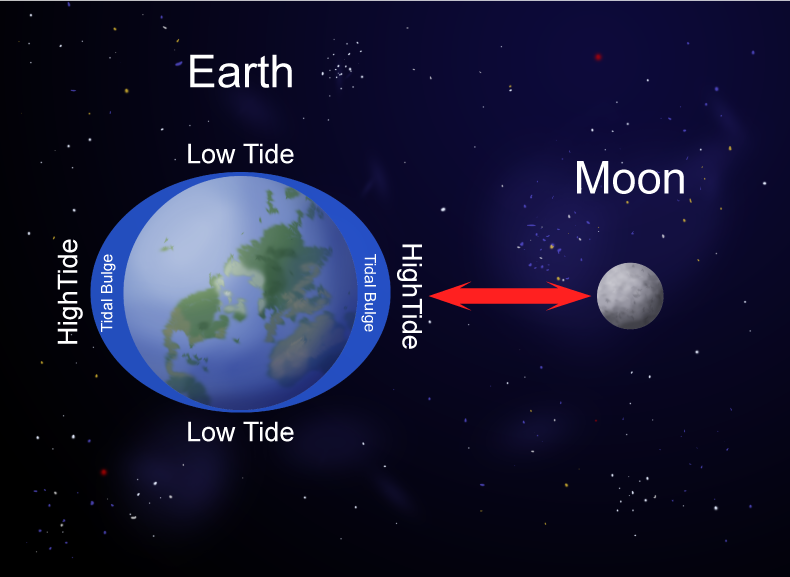Physics in the Ocean
Surfing on Lunar Tides
Surfing requires a lot of skills and involves a lot of physics to boot: equilibrium, friction, conservation of momentum, and buoyancy, just to name a few.
Fortunately, surfers don’t have to know how these rules work. They just need to know how to use them well.
Surfing on Lunar Tides sounds like a sporting event in a sci-fi trilogy of some kind, but it’s usually just called surfing.
The Moon orbits the Earth, thanks to their mutual gravitational attraction. It’s a slightly elliptical orbit, as orbits tend to be. The force of gravity on the Moon from the Earth keeps it there. The equal-and-opposite reaction force of gravity from the Moon on the Earth does something noticeable too.
The ocean tides are caused by the gravitational pull of the Moon on the Earth. Depending on where Earth’s natural satellite is located, a beach will have a tide that is either low or high, or somewhere in between.

There are three separate force diagrams up there: one for the center of the earth, one for the side by the moon, and one on the opposite side of the moon. The sum of the forces on the sides contributes to the action of the tides.
This diagram shows how the tides are dependent on the position of the Moon as it passes over the surface of the water. The Moon “pulls” the water closest to it towards it, creating a tidal bulge; consequently, the ocean on the opposite side of that tidal bulge doesn’t feel the gravitational pull as much, but the Earth-Moon center of mass orbiting the Sun is constant, so the water on the opposite side of the moon essentially “pulls back” to keep the center of mass where it belongs.
In reality the tides are complicated by the motion of the Sun as noted by the diagram, but its position relative to Earth doesn’t affect the tides half as much as the Moon. When the Sun pulls with the Moon, the tides are higher than usual. Against it, they’re smaller.
When the Moon is closer to Earth with its elliptical orbit, then the height difference between low and high tide is greater as well. Naturally, the converse is also true.
A surfer scientist could determine when the maximum tides occur to his advantage. The rest of us just use a tide table.
By the way, surfers unfortunately look like seals—a.k.a shark food—as they paddle on their boards. You never know what’s hiding underneath the surf!